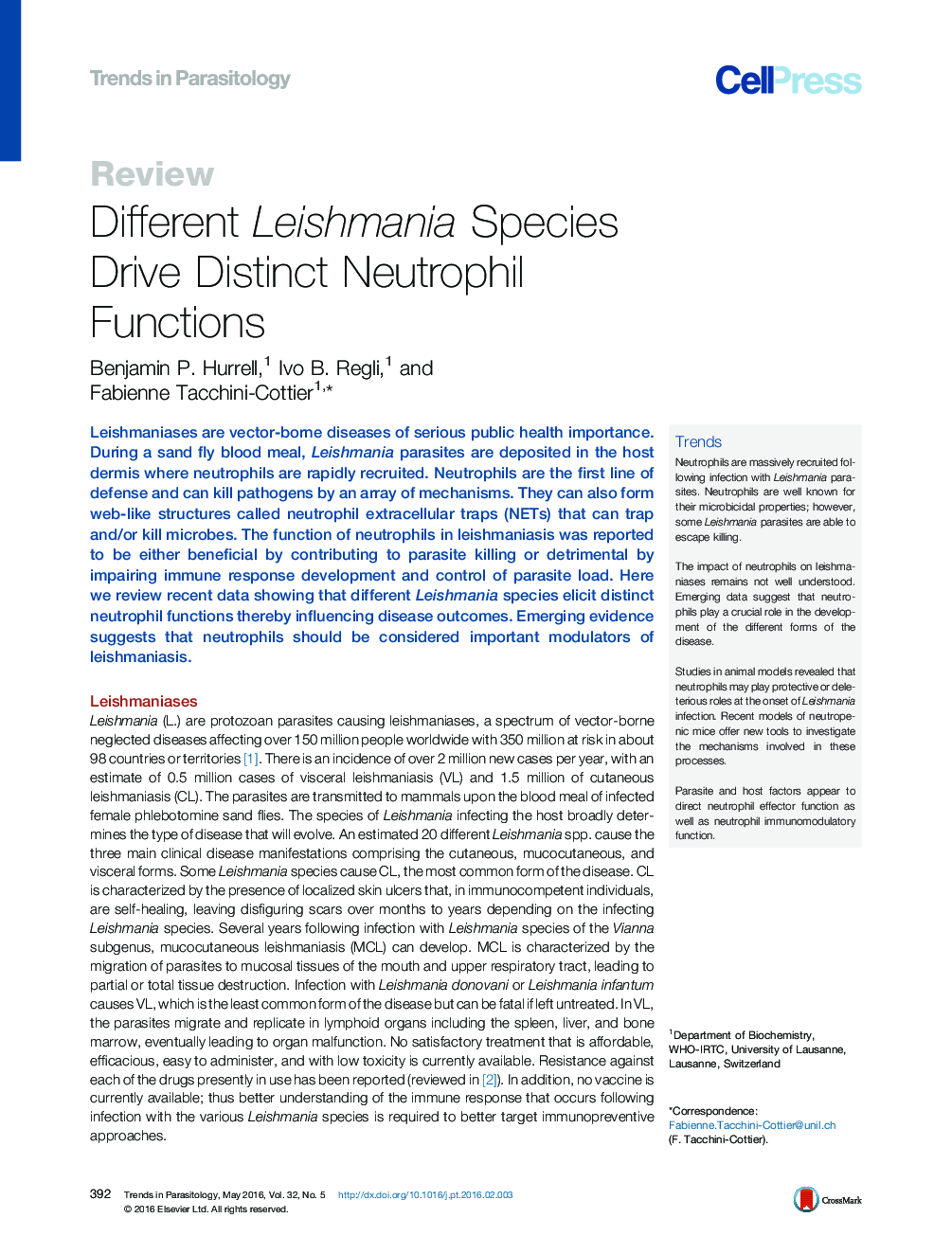| کد مقاله | کد نشریه | سال انتشار | مقاله انگلیسی | نسخه تمام متن |
|---|---|---|---|---|
| 3422922 | 1226960 | 2016 | 10 صفحه PDF | دانلود رایگان |
Leishmaniases are vector-borne diseases of serious public health importance. During a sand fly blood meal, Leishmania parasites are deposited in the host dermis where neutrophils are rapidly recruited. Neutrophils are the first line of defense and can kill pathogens by an array of mechanisms. They can also form web-like structures called neutrophil extracellular traps (NETs) that can trap and/or kill microbes. The function of neutrophils in leishmaniasis was reported to be either beneficial by contributing to parasite killing or detrimental by impairing immune response development and control of parasite load. Here we review recent data showing that different Leishmania species elicit distinct neutrophil functions thereby influencing disease outcomes. Emerging evidence suggests that neutrophils should be considered important modulators of leishmaniasis.
TrendsNeutrophils are massively recruited following infection with Leishmania parasites. Neutrophils are well known for their microbicidal properties; however, some Leishmania parasites are able to escape killing.The impact of neutrophils on leishmaniases remains not well understood. Emerging data suggest that neutrophils play a crucial role in the development of the different forms of the disease.Studies in animal models revealed that neutrophils may play protective or deleterious roles at the onset of Leishmania infection. Recent models of neutropenic mice offer new tools to investigate the mechanisms involved in these processes.Parasite and host factors appear to direct neutrophil effector function as well as neutrophil immunomodulatory function.
Journal: - Volume 32, Issue 5, May 2016, Pages 392–401
